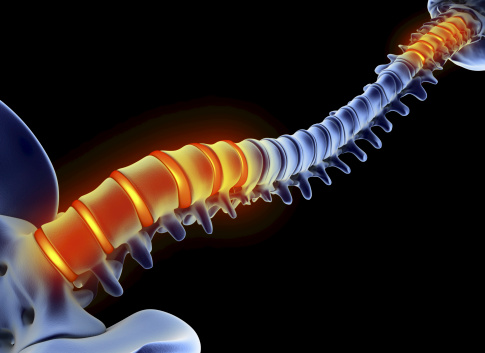Symptoms & Causes Neck Pain (Cervical & Cranio-Cervical)
Symptoms
Neck discomfort can make it difficult to sit up, turn your head, or go about your day. Symptoms may include:
- Stiffness
- Less range of motion, making it difficult to turn your head comfortably
- Muscle pain
- Cervical radiculopathy symptoms include nerve pain in the neck area and often radiating or "referred pain" which travels down into the shoulders and arms; numbness or tingling in the arms; and sometimes weakness in the hands.
- Cervicogenic" headache, causing stiffness, pain on one side of the head or face or around the eyes, and/or blurred vision in one eye
What Causes Neck Pain?
There are many causes of neck pain. Some of the most common are:
- Muscle strain. Carrying heavyweight, muscle overuse, chronic stress, repetitive movements, and holding your head in an incorrect position cause discomfort.
- Injuries. You may have neck pain due to an injury, such as a sports injury, fall, or car accident.
- Nerve compression or “pinched nerves”. Herniation, or bulging of the discs in the cervical spine, and bone spurs, the extra bone that forms over time, can press on nerves in the spinal cord and cause pain.
- Diseases. Several diseases such as arthritis or, more rarely, cancer can affect the cervical spine, causing pain and discomfort.
- Headaches. Cervicogenic headaches, aka tension headaches, derive from neck pain and dysfunction.
Common Illnesses and Injuries Affecting the Neck
There are many causes of neck pain. Some of the most common are:
- Stiff neck
- Herniated cervical spine disc (degenerative disc disease)
- Spondylosis, which causes wear on both the discs and the vertebrae of the neck; there may be abnormal growths or spurs on the bones
- Arthritis
- Spinal stenosis , a narrowing that places pressures on the nerves and spinal cord
- Spinal deformity
- Pinched nerve (cervical radiculopathy)
- Whiplash

How to Prevent Neck Pain
While certain neck problems, such as deformities in the spine, cannot be prevented, there are steps you can take to reduce your chance of developing common neck discomfort.
- Maintain good posture by consciously aligning your head and your neck and standing up as straight as possible.
- Move frequently, especially if you are sitting for long periods or working in front of a computer for much of the workday.
- Set up a spine-friendly workspace, with the top of your computer monitor at eye level and your knees slightly lower than your hips when sitting.
- Choose the best sleep position and pillow to achieve the most neck comfort.
- Prevent tension by periodically stretching your neck and turning your head from side to side throughout the day, and consider practices such as meditation and breathing to reduce stress.
- Avoid smoking, which causes damage to the blood vessels and can increase the risk of degenerative diseases of the spine.
- Distribute weight across both shoulders rather than carrying a bag on one shoulder, especially if the bag is heavy.
When to See a Doctor for Neck Pain
If your neck discomfort doesn't go away, gets worse, or limits your daily activities, it may be time to see a doctor. You should see a physician if you are experiencing any of these symptoms:
- Numbness, weakness, or tingling in the hands or arms
- Difficulty breathing or swallowing
- Loss of bladder or bowel control
- Neck pain that feels worse at night
- Severe pain after an injury

Get Neck Pain Relief from NewYork-Presbyterian Och Spine
There's no reason to live with neck pain. Some people experience minor neck pain, while others may require more advanced care to restore form and function. Whatever your condition, our team takes the time to thoroughly evaluate your symptoms and determine the most appropriate course of care for you.
Make an appointment to see one of our experts.
Patient Stories


